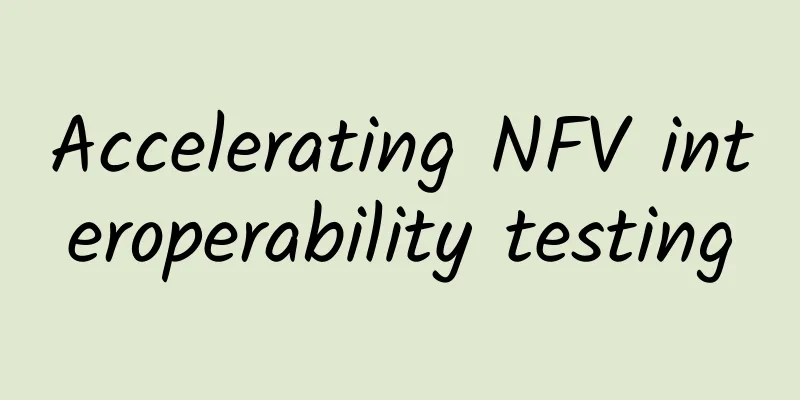Huawei Cloud and Ground Collaboration Accelerates the Commercialization of Network AI and Enables Autonomous Driving Networks

|
[51CTO.com original article] On September 23, 2020, Huawei Connect 2020 with the theme of "Co-creating New Industry Value" was grandly held in Shanghai. On the 25th, at the media roundtable of the conference, Huawei officially released the "Huawei Network Artificial Intelligence Engine iMaster NAIE White Paper" to enable autonomous driving networks. Since its launch on Huawei Cloud in April 2019, iMaster NAIE Network Artificial Intelligence Engine (NAIE for short) has gained a wealth of practical opportunities in the telecommunications industry. The release of this white paper is a demonstration of Huawei's strength in introducing AI technology into telecommunications networks based on the full cloudification of networks. It is also a solid step for Huawei to help the telecommunications field improve network efficiency, reduce operating costs, and evolve towards autonomous driving networks. Han Yu, General Manager of Huawei's Network Artificial Intelligence (NAIE) Product Department, introduced the "White Paper on Huawei's Network Artificial Intelligence Engine iMaster NAIE" on the spot. Operators face many challenges in applying AI features at scale In the white paper released this time, there is a part that has attracted special attention from telecom operators, that is, Huawei's cloud-ground collaboration solution, which solves the key problems encountered in the process of large-scale replication of AI applications. As we all know, the telecommunications industry has always been at the forefront of AI applications. Practice has also proved that AI technology can indeed bring significant value in terms of operation and maintenance efficiency, energy efficiency, network resource utilization, and user service experience improvement. However, in the process of intelligent upgrading of the telecommunications industry, there are still many challenges in the large-scale engineering application of network AI, such as poor model generalization ability, high resource consumption of model retraining, difficulty in managing model version upgrades, few local samples, and insufficient model accuracy. Taking AI model version upgrade management as an example, AI models in many scenarios are one model per station, such as wireless traffic prediction, wireless base station intelligent energy saving and other scenarios. The models of each site are customized and trained based on localized data. However, due to the different model versions and upgrade frequencies of each site, thousands of site models make management very difficult. Telecom operators urgently need a unified platform to efficiently implement management tasks such as model status monitoring and version upgrade strategies. While there are many site models, some scenarios face the problem of too few samples to support model training. For example, in the core network KPI anomaly detection, the frequency of anomalies in a single station is very low, and the number of samples required for training is not enough. At this time, telecom operators need to be able to gather all sample information from all stations, and use technologies such as federated learning to train AI models that meet business accuracy requirements. In addition, there is also the risk that AI model training occupies too many resources and may affect equipment performance. Faced with such challenges, Huawei innovatively launched a cloud-ground collaboration solution that can realize the large-scale application of AI features, which is also the key to helping operators move towards autonomous driving networks. The cloud refers to NAIE cloud intelligence deployed on public clouds, joint cloud or HCS, and the ground refers to the network AI integrated in the network control unit and the network element AI in the network element equipment. Cloud-ground collaboration accelerates large-scale application of AI features Huawei's cloud-ground collaboration means that in the running state, the cloud and the ground work together to complete a series of AI model tasks such as uploading data samples to the cloud, model status management, model retraining, model/knowledge distribution, and optimal update. In addition, the cloud can also gather global network knowledge and experience, as well as high-precision models obtained through full data training, and then continuously inject them into the ground in a collaborative form, supporting the intelligent iteration of telecommunications networks and making the network more and more "smart". Cloud-ground collaboration architecture Let's take the actual process in the telecommunications field as an example to witness the charm of cloud-ground collaboration. When the DC PUE model of a telecommunications office is not updated for three months, the model accuracy begins to deteriorate and drops to 70%. At this time, the ground end will retrain locally, but due to the small number of samples and limited resources, the optimization effect may not be obvious. The cloud side will form a high-quality model by gathering sample data from multiple offices and processing it with expert experience. Therefore, the model warehouse in the cloud side will push the trained or optimized new model package to the ground side. After receiving it, the ground side can conduct actual comparison and evaluation and upgrade the best one. It is worth mentioning that NAIE can also build simulation scenarios such as DC energy saving and wireless network optimization. Traditional telecommunications network optimization work must first be verified by the simulation system, but it often takes a week to get the optimization parameters, which is not very efficient. Now, through the simulation system on Huawei's cloud, it will not affect the actual network performance, and it can quickly feedback. It only takes one day to feedback the best optimization parameters, which greatly improves the efficiency of network optimization. In summary, cloud-ground collaboration has achieved “effective at one point, replicated at multiple points” - when the features of AI are successfully implemented at one location, knowledge and experience can be quickly formed and replicated at other locations, thereby achieving large-scale application across the entire network. Three development stages of cloud-ground collaboration to match different AI scenarios It is understood that there are three stages in the actual application deployment of cloud-ground collaboration. Telecom operators can choose the appropriate stage for different scenarios, thereby greatly improving the resource efficiency of the network. Scenarios where the model is relatively simple and the algorithm structure is stable, and only the model parameters need to be optimized and adjusted based on local data, such as realizing online machine duty for core network changes, are more suitable for the "cloud training initial model + ground retraining" stage; and scenarios where the model is relatively complex and Huawei needs to continuously optimize the model algorithm structure, such as wireless KPI anomaly detection, the "cloud model distribution + ground retraining" stage is better; and if the model is complex, Huawei is required to annotate data with high quality in the cloud, and use knowledge graphs and simulation and other knowledge capabilities to optimize the model, it is recommended to choose the "cloud-ground real-time collaboration, model automatic evolution" stage, such as IP RAN/PTN intelligent alarm, DC PUE optimization, etc. So what value can iMaster NAIE, which has powerful cloud-ground collaboration capabilities, bring to telecom operators? In a provincial company of a domestic operator, the proportion of multi-network element failures is close to 20%, and the impact on the existing network services is more than 9 times that of single-network element failures. However, the difficulty in locating cross-border faults has caused high operation and maintenance costs. Huawei's cloud-ground collaboration solution first uploads the existing network alarm, topology, configuration and other related data to the cloud through the ground end, and then trains the fault aggregation model in the cloud and sends it to the ground end. After the ground end executes, it uses the fault propagation map established by the network knowledge base to delimit the fault, quickly find the root cause of the fault, and finally complete the repair. After deployment, the operator's fault work order compression rate increased by more than 10%, not only significantly improving the efficiency of the operation and maintenance personnel's dispatching, but also improving the efficiency of problem location. As an important intelligent component of Huawei's autonomous driving network solution, iMaster NAIE has been helping operators achieve digital transformation as quickly as possible. Cloud-ground collaboration is just one of NAIE's many innovative "black technologies". NAIE also provides one-stop network AI cloud services to make network AI development simple and efficient, and helps operators transform their talents through rich NAIE training services. At present, NAIE has been implemented in multiple operators. We believe that in the near future, autonomous driving networks will surely bring greater surprises to telecom operators. [51CTO original article, please indicate the original author and source as 51CTO.com when reprinting on partner sites] |
>>: GSA: More than 100 commercial 5G networks launched worldwide
Recommend
Verizon to launch 5G home internet service in Cleveland
Verizon announced Wednesday that it will launch 5...
From fiber to 5G: A comparison of internet connection types
Connecting to the internet has never been easier:...
Understand 5G in one article: Will it subvert the sky-high living costs?
When we were still accustomed to browsing the web...
Why the United States wants to delist China's three major operators
According to the Russian Satellite Network, regar...
Six free network latency testing tools worth recommending
As a network administrator or network engineer, i...
From the practice of operators, why "intelligent multi-cloud" has become the key to the success of cloud strategy
If the symbol of the second industrial revolution...
How to solve the problem that Ubuntu 18.04 cannot start normally after switching from XEN to KVM
There are fewer and fewer businesses that still u...
spinservers: $99/month - 2*E5-2630Lv3, 256GB memory, 2*1.6TB SSD, 30TB/10Gbps bandwidth, Dallas data center
spinservers recently released several promotional...
Online troubleshooting guide: The ultimate way to bring your server back to life
Have you ever encountered these headache-inducing...
What secrets do you not know about the spanning tree protocol?
1. Spanning Tree Protocol (STP) Compaq was long a...
Twists and turns: ZTE may have to fight a protracted battle to lift the ban
On May 22, foreign media reported that Trump prop...
vRAN, C-RAN, O-RAN, OpenRAN, the love-hate relationship between Open RAN
[[398639]] This article is reprinted from the WeC...
China Economic and Trade Development Park and Huawei signed a strategic cooperation agreement
On September 11, Zhongjing Chengyuan Technology C...
How will HTTP and DNS protocols evolve in the 5G era?
HTTP and DNS have almost become two household pro...
Beyond 5G: A revolutionary leap toward the frontier of 6G network sensing
In the rapidly evolving world of telecommunicatio...









